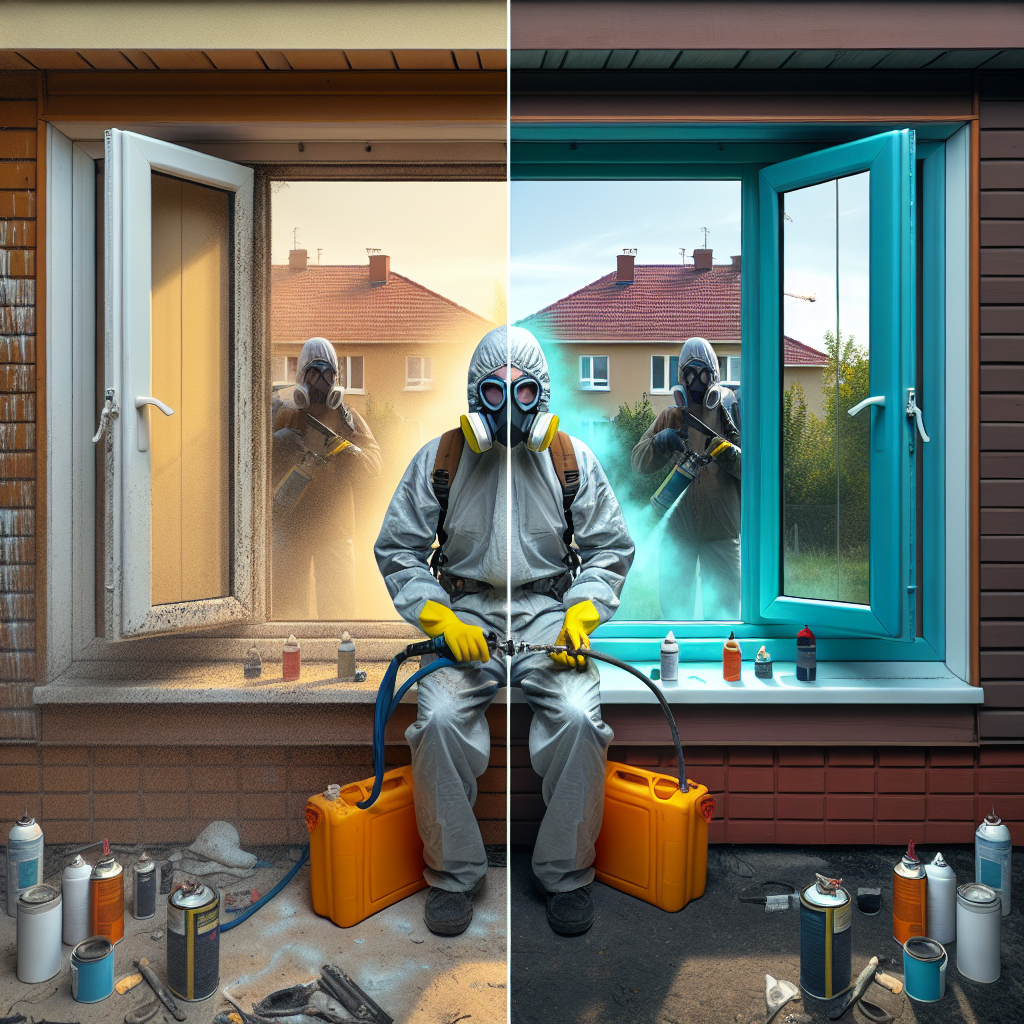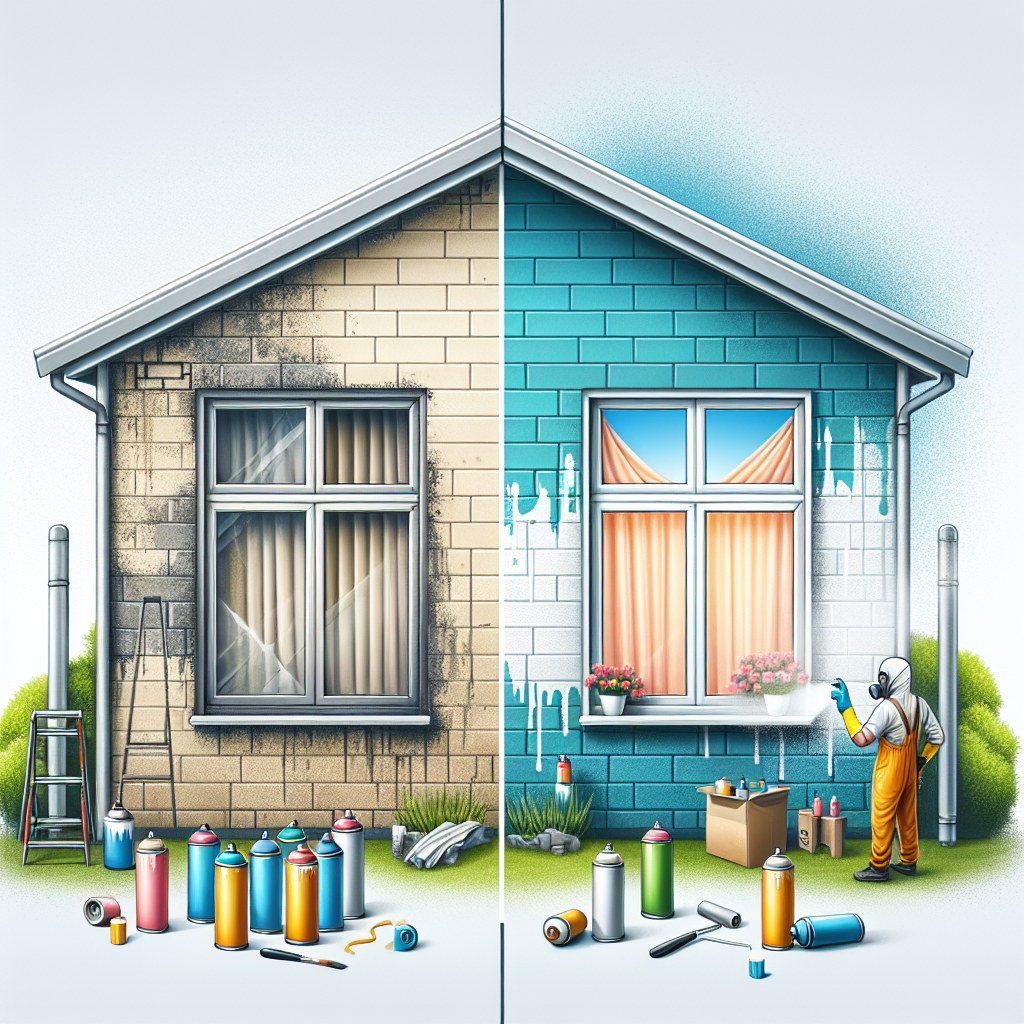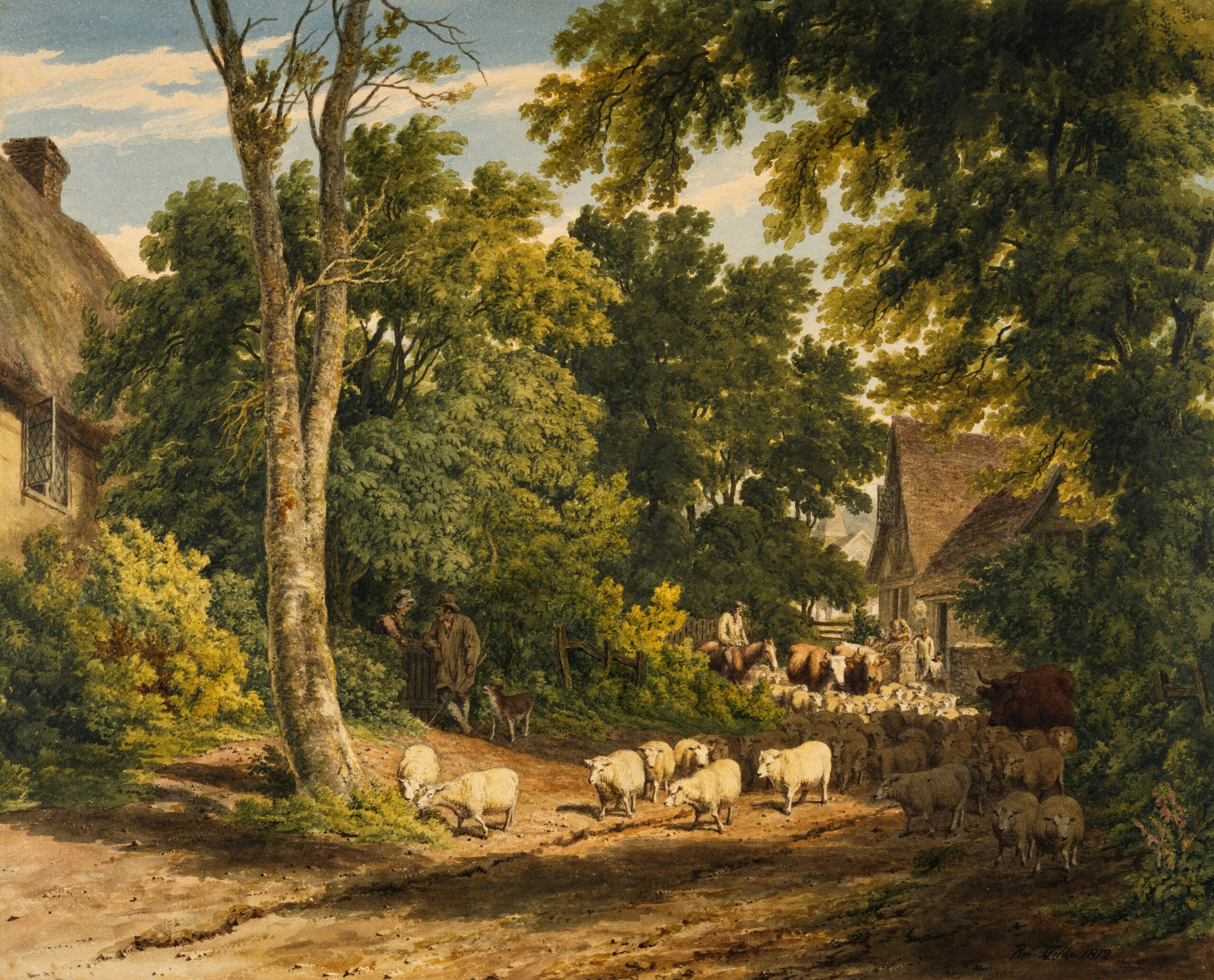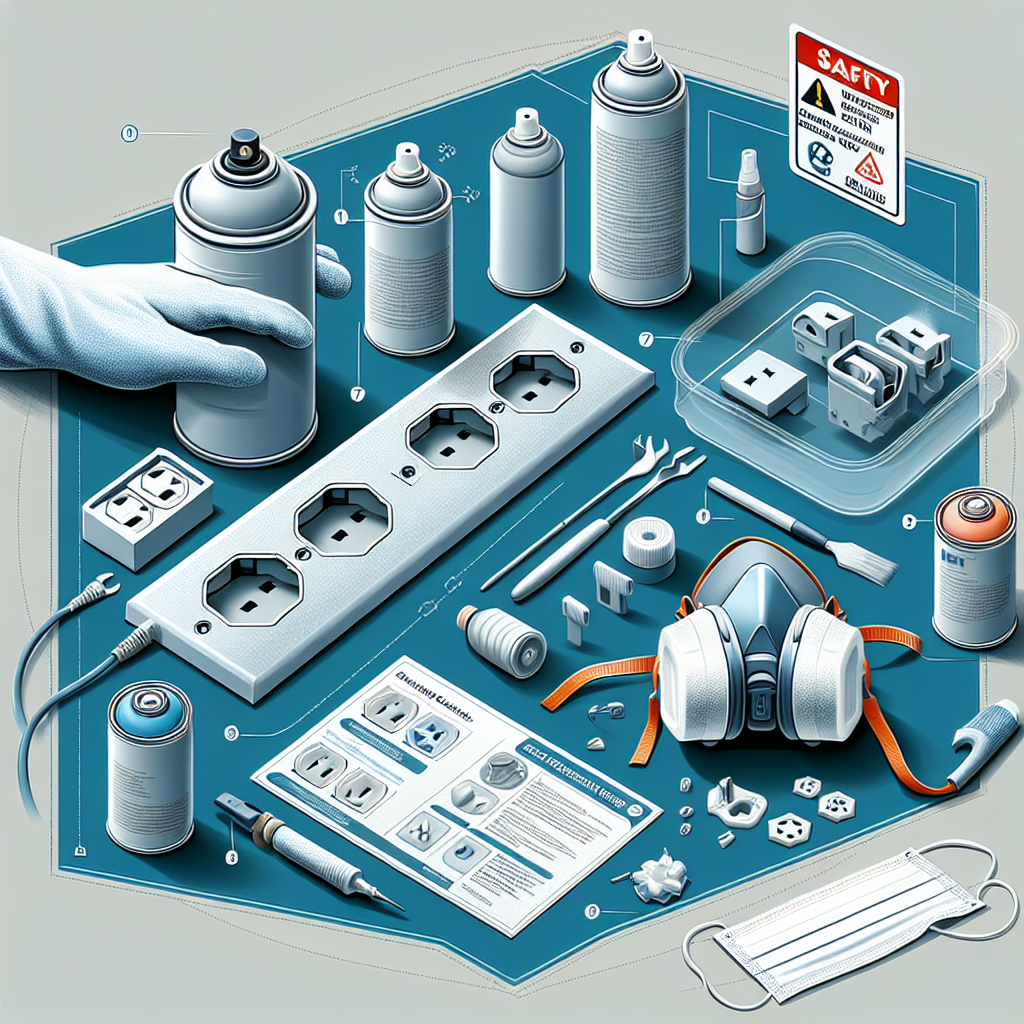Spraying paint on uPVC windows is a question that often arises when considering ways to update or refresh the appearance of these durable and efficient window frames. While uPVC windows are known for their resistance to fading, chipping, and peeling, adding a fresh coat of paint can be a cost-effective and versatile solution to transform their look. However, before grabbing a can of spray paint, there are important factors to consider, such as surface preparation, paint type selection, and proper application techniques. In this article, we will explore the viability of spray painting uPVC windows, the key steps involved, and the potential benefits and drawbacks of this method.

This image is property of images.unsplash.com.
Understanding UPVC Windows
UPVC, which stands for Unplasticized Polyvinyl Chloride, is a type of plastic commonly used in the construction industry. It is widely recognized as one of the most durable and low-maintenance materials for windows and doors. UPVC windows are known for their excellent insulation properties, energy efficiency, and resistance to weather conditions.
The Use of UPVC in Windows
UPVC is specifically chosen for window frames due to its exceptional qualities. It is a lightweight material that is resistant to rot, rust, and corrosion. This makes it ideal for use in areas with high moisture levels or exposure to extreme weather. UPVC windows provide superior thermal and acoustic insulation, making homes more energy-efficient and reducing external noise pollution.
Advantages of UPVC Windows
There are several advantages to using UPVC windows in residential and commercial buildings. Firstly, they are highly durable and long-lasting, requiring minimal maintenance compared to other window materials such as wood or aluminum. UPVC windows also offer excellent security features, with multi-point locking systems and reinforced frames. Additionally, they are customizable and available in a wide range of colors and styles to suit any architectural design.
The Need to Paint UPVC Windows
While UPVC windows come in a variety of colors, there may be instances where homeowners or businesses desire a different color or want to refresh the appearance of their windows. Painting UPVC windows can be a cost-effective solution to achieve the desired aesthetic appeal. Moreover, it can help address issues of fading or discoloration that may occur over time due to exposure to sunlight and other environmental factors.
Reasons for Painting UPVC Windows
There are several reasons why individuals may choose to paint their UPVC windows. Firstly, it allows for customization and the ability to match the window frames to the overall color scheme of the building. Painting can also help restore the appearance of windows that have faded or become discolored over time. Additionally, painting UPVC windows can provide an added layer of protection against UV rays and weathering.
Exploring Aesthetic Appeals
Painting UPVC windows opens up a world of possibilities when it comes to design and aesthetics. Whether it’s a bold color choice to make a statement or a more subtle shade that complements the building’s exterior, painting allows for creativity and personalization. It can transform the look of a property, adding curb appeal and increasing its value.
Issues with Fading or Discoloration
Over time, UPVC windows may experience fading or discoloration due to prolonged exposure to sunlight and other environmental factors. This can make the windows appear aged and dull, affecting the overall appearance of the building. By painting the UPVC frames, it is possible to restore their original vibrancy and freshness, giving the windows a new lease on life.
Can You Paint UPVC Windows?
There are some common misconceptions about painting UPVC windows. Many people believe that UPVC is not a suitable material for painting and that it cannot be effectively coated. However, this is not the case. With the right preparation and techniques, UPVC windows can be successfully painted, transforming their appearance and prolonging their lifespan.

This image is property of images.unsplash.com.
Reality of Painting UPVC Materials
Painting UPVC windows requires careful consideration and attention to detail. It is essential to choose the appropriate type of paint and apply it correctly to ensure a long-lasting and professional finish. While it may be tempting to undertake the painting process as a DIY project, seeking the guidance and expertise of professionals can ensure the best results and alleviate any potential issues.
Choosing a Paint for UPVC Windows
When selecting a paint for UPVC windows, there are certain traits to look for to ensure a successful outcome. Firstly, the paint should be specifically designed for use on plastics, including UPVC. It should provide excellent adhesion and durability, with resistance to fading and chipping. Additionally, it is important to choose a paint that offers UV protection, as this will help preserve the color and integrity of the windows over time.
Recommended Paint Types for UPVC
Acrylic-based paints are generally recommended for painting UPVC windows. These paints offer excellent adhesion and durability, ensuring a long-lasting finish. Water-based acrylic paints are environmentally friendly and easy to work with, making them a popular choice. It is advisable to consult with professionals or paint suppliers to determine the most suitable paint type for specific UPVC window frames.
Where to Buy Suitable Paint
Finding the right paint for UPVC windows may require a bit of research. Specialized paint suppliers or manufacturers that cater to the construction industry are likely to stock paints specifically formulated for UPVC. It is important to choose a reputable supplier to ensure the quality and reliability of the paint. In some cases, professionals specializing in painting UPVC may also offer guidance and provide access to suitable paint products.

This image is property of images.unsplash.com.
The Role of Spray Painting in UPVC Windows
Spray painting is a popular method for coating UPVC windows due to its efficiency and effectiveness. It offers a smooth and professional finish, evenly covering the surface of the windows. Spray painting allows for greater control and precision, ensuring that every nook and cranny of the window frames is adequately coated. It is also a quicker method compared to traditional brush or roller painting.
Benefits of Spray Painting UPVC Windows
There are several benefits to spray painting UPVC windows. Firstly, spray painting ensures an even and consistent coverage, minimizing the risk of brush marks or uneven application. The fine mist of the paint adheres to the window frames, providing a smooth and flawless finish. Additionally, spray painting allows for a faster and more efficient process, making it suitable for large-scale projects.
Comparison of Spray Painting vs. Other Methods
When considering different methods of painting UPVC windows, it is important to understand the pros and cons of each. Traditional brush painting can be time-consuming and may result in visible brush strokes. Roller painting, while faster than brush painting, may still leave behind a textured finish. Spray painting offers a superior finish with minimal effort and time, making it a desirable choice for painting UPVC windows.
Preparation Steps for Spray Painting UPVC Windows
Before beginning the spray painting process, several preparation steps are necessary to ensure optimal results. Firstly, the windows should be thoroughly cleaned to remove any dirt, dust, or grime that may hinder the adhesion of the paint. Taping off areas that should not be painted, such as glass panes or hardware, is essential to maintain a neat and clean finish. Finally, applying a suitable primer is crucial for enhancing adhesion and promoting paint durability.

Cleaning the Windows
Cleaning the UPVC windows is an essential first step before spray painting. This can be done using a mixture of mild soap and water, gently scrubbing the surfaces with a soft brush or sponge. Removing all dirt, grease, and debris is vital to ensure proper adhesion of the paint. It is important to rinse the windows thoroughly and allow them to dry completely before proceeding with the painting process.
Taping off Areas
To achieve a professional and clean finish, certain areas of the windows should be taped off before spray painting. This includes glass panes, handles, locks, and other hardware that should not come into contact with the paint. Using high-quality painter’s tape, carefully cover these areas, ensuring that the tape adheres securely and leaving no gaps. This will prevent paint from accidentally splattering onto unwanted surfaces.
Primer Application Before Painting
Applying a suitable primer is a crucial step in spray painting UPVC windows. The primer helps improve the adhesion of the paint and promotes long-lasting durability. It is important to choose a primer specifically designed for UPVC surfaces. Applying a thin and even coat of primer to the prepared window frames is essential for achieving a professional and flawless finish.
The Spray Painting Process for UPVC Windows
The spray painting process requires specific tools to ensure accurate and efficient application of the paint. These tools include a high-quality spray gun, an air compressor, and a suitable container for the paint. Before starting, it is essential to wear appropriate safety equipment, such as goggles, a respirator mask, and protective clothing. Following a step-by-step guide will help achieve the best results.

Tools Needed for Spray Painting
To successfully spray paint UPVC windows, the following tools are necessary:
- High-quality spray gun
- Air compressor
- Suitable container for the paint
- Painter’s tape
- Drop cloths or plastic sheets to protect the surrounding areas from overspray
- Safety equipment (goggles, respirator mask, protective clothing)
Step-by-Step Guide to Spray Painting
- Prepare the windows by cleaning them thoroughly, ensuring they are completely dry.
- Tape off any areas that should not be painted, such as glass or hardware.
- Apply a suitable primer to enhance adhesion and paint durability, following the manufacturer’s instructions.
- Once the primer has dried, mix the paint according to the manufacturer’s instructions.
- Start spray painting from the top of the window frames, moving in a smooth and even motion.
- Overlap each stroke slightly to achieve full coverage, making sure not to oversaturate the surface.
- Allow the first coat to dry completely before applying subsequent coats, as recommended by the paint manufacturer.
- Apply additional coats as necessary, ensuring adequate coverage and a smooth finish.
- Once the final coat has dried, carefully remove the tape and any protective coverings.
- Inspect the painted windows for any touch-ups or imperfections, and make the necessary adjustments.
Safety Precautions During Painting
It is important to prioritize safety when spray painting UPVC windows. Some safety precautions to consider include:
- Wearing goggles to protect the eyes from overspray
- Using a respirator mask to prevent inhalation of paint fumes
- Applying paint in a well-ventilated area or using appropriate ventilation systems
- Wearing protective clothing to protect skin from contact with paint
- Following the manufacturer’s instructions for the safe use of the paint and equipment
Possible Challenges and Solutions in Spray Painting UPVC Windows
While spray painting UPVC windows can yield excellent results, there may be some challenges along the way. Common mistakes include overspray, uneven coverage, or drips in the paint. However, these mistakes can be rectified with proper technique and skill. It is essential to address these issues promptly to achieve a professional and flawless finish.
Common Mistakes Done While Painting
Some common mistakes made during the spray painting process include:
- Overspraying, resulting in drips, runs, or uneven coverage
- Inadequate surface preparation, leading to poor adhesion of the paint
- Insufficient drying time between coats, causing the paint to bubble or peel
- Failure to properly cover or tape off areas that should not be painted
- Using low-quality or incompatible paint, leading to unsatisfactory results
How to Fix These Mistakes
To fix these common mistakes, several solutions can be employed:
- If overspray or uneven coverage occurs, lightly sand the affected area and reapply additional coats as needed.
- In the case of poor adhesion, it may be necessary to remove the paint entirely and start the process again, ensuring proper surface preparation.
- If the paint bubbles or peels due to insufficient drying time, sand the affected area, remove any loose paint, and repaint accordingly.
- For areas that were accidentally painted but should not have been, carefully scrape off the paint using a plastic scraper or appropriate solvent.
Preventing Future Issues
To prevent these mistakes from occurring in the future, it is important to take certain precautions:
- Properly prepare the surfaces before painting, including thorough cleaning and adequate drying time.
- Follow the manufacturer’s instructions for the paint, including recommended drying times between coats.
- Use high-quality paints specifically designed for UPVC surfaces.
- Take the time to properly cover and tape off areas that should not be painted.
- Practicing proper spraying techniques, including maintaining the correct distance from the surface and applying even strokes.
Maintenance of Spray Painted UPVC Windows
Once UPVC windows have been spray painted, it is essential to care for them properly to ensure their longevity and appearance. Routine maintenance should include regular cleaning using mild detergents and avoiding abrasive cleaning tools or solutions that may damage the paint. It is also important to periodically inspect the windows for any signs of wear and tear, such as chips or cracks in the paint, and address these issues promptly before they worsen.
How to Care for Painted Windows
Caring for spray-painted UPVC windows involves a few simple steps:
- Regularly clean the windows using mild soap and water, ensuring that abrasive or harsh chemicals are avoided.
- Use a soft cloth or sponge to gently wipe away dirt and grime without scratching the paint.
- Avoid using abrasive cleaning tools or solutions that may damage the paint.
- Inspect the windows periodically for any signs of damage or wear, such as chipping or cracking, and address these issues promptly.
How Often to Repaint
The frequency of repainting spray-painted UPVC windows depends on various factors, including the quality of the paint, the location of the windows, and the level of exposure to external elements. Generally, UPVC windows should not require repainting for several years, as high-quality paints are designed to offer long-lasting durability. However, regular maintenance and touch-ups may be necessary over time to maintain the appearance and protect against wear and tear.
Signs of Wear and Tear
Signs that spray-painted UPVC windows may require repainting or touch-ups include:
- Chipping or cracking of the paint
- Fading or discoloration of the color
- Visible scratches or scuffs on the surface
- Loss of gloss or sheen
- Changes in the texture or appearance of the paint
Professional vs. DIY Spray Painting of UPVC Windows
When considering whether to undertake the spray painting of UPVC windows as a DIY project or hire professionals, several factors should be taken into account.
Analyzing the Cost Factor
The cost of spray painting UPVC windows can vary depending on various factors, such as the size of the project, the type of paint used, and whether professional services are sought. While DIY painting may initially seem more cost-effective, it is important to consider the cost of purchasing or renting the necessary equipment and supplies. Professionals, on the other hand, may provide a comprehensive service that includes proper surface preparation, high-quality paints, and precise application techniques.
Evaluating Time and Effort
The spray painting process for UPVC windows can be time-consuming, especially for large-scale projects. DIY painting requires adequate preparation time, including cleaning, priming, and taping off areas. Additionally, the actual painting process can be labor-intensive, requiring careful attention to detail. Professionals, with their experience and expertise, can streamline the process and achieve optimal results within a shorter time frame.
Quality Comparison Between the Two Methods
While DIY painting may be a viable option for some individuals, professional spray painting offers several advantages in terms of quality. Professionals have access to premium paints specifically designed for UPVC surfaces and possess the necessary skills and knowledge to achieve a flawless and long-lasting finish. Additionally, their equipment and techniques result in even coverage and minimize the risk of common painting mistakes.
In conclusion, spray painting UPVC windows can be a valuable solution for individuals looking to update the appearance or restore the vibrancy of their windows. Understanding the process, selecting the appropriate paints, and following proper techniques are essential for achieving optimal results. Whether undertaken as a DIY project or entrusted to professionals, spray painting allows for personalization and customization, enhancing the aesthetic appeal and longevity of UPVC windows.



